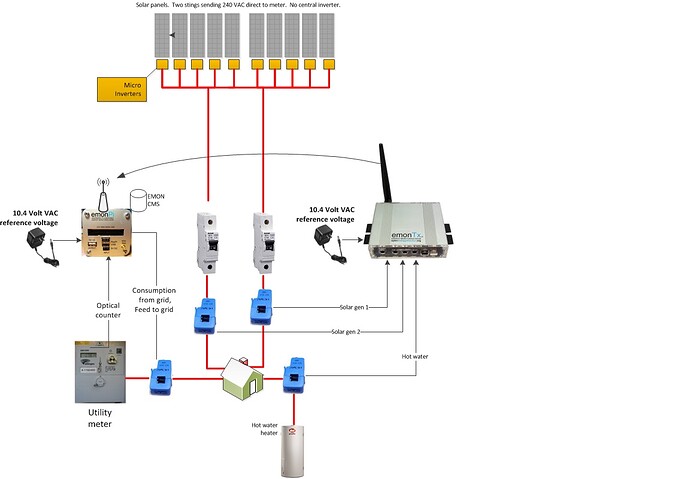Assuming that is when the mains is 240 V, you’ll read the voltage and power a bit over 10% low.
You can (the hard way) do the calibration procedure described in the “Learn” section, reloading the sketch in the Atmel 328P processor each time you need to tweak a number, or (the easy way) you can change the “scales =” factors in emonhub.conf.
You should be looking under the nodeID for your emonPi, which should be NodeID=5. The scale factors relate 1:1 to the values in ‘names’, so 1 becomes 1.1 (or so) and 0.01 becomes 0.011
nodename = emonpi
[[[rx]]]
names = power1,power2,power1pluspower2,vrms,t1,t2,t3,t4,t5,t6,pulsecount
datacodes = h, h, h, h, h, h, h, h, h, h, L
scales = 1,1,1,0.01,0.1,0.1,0.1,0.1,0.1,0.1,1
units = W,W,W,V,C,C,C,C,C,C,p
You should change only one: either the calibration factors in the sketch or the scales in emonhub.conf, not both. The more “natural” place is in the sketch. Unfortunately, many people don’t want to load the Arduino IDE so they cannot change the calibration there.
